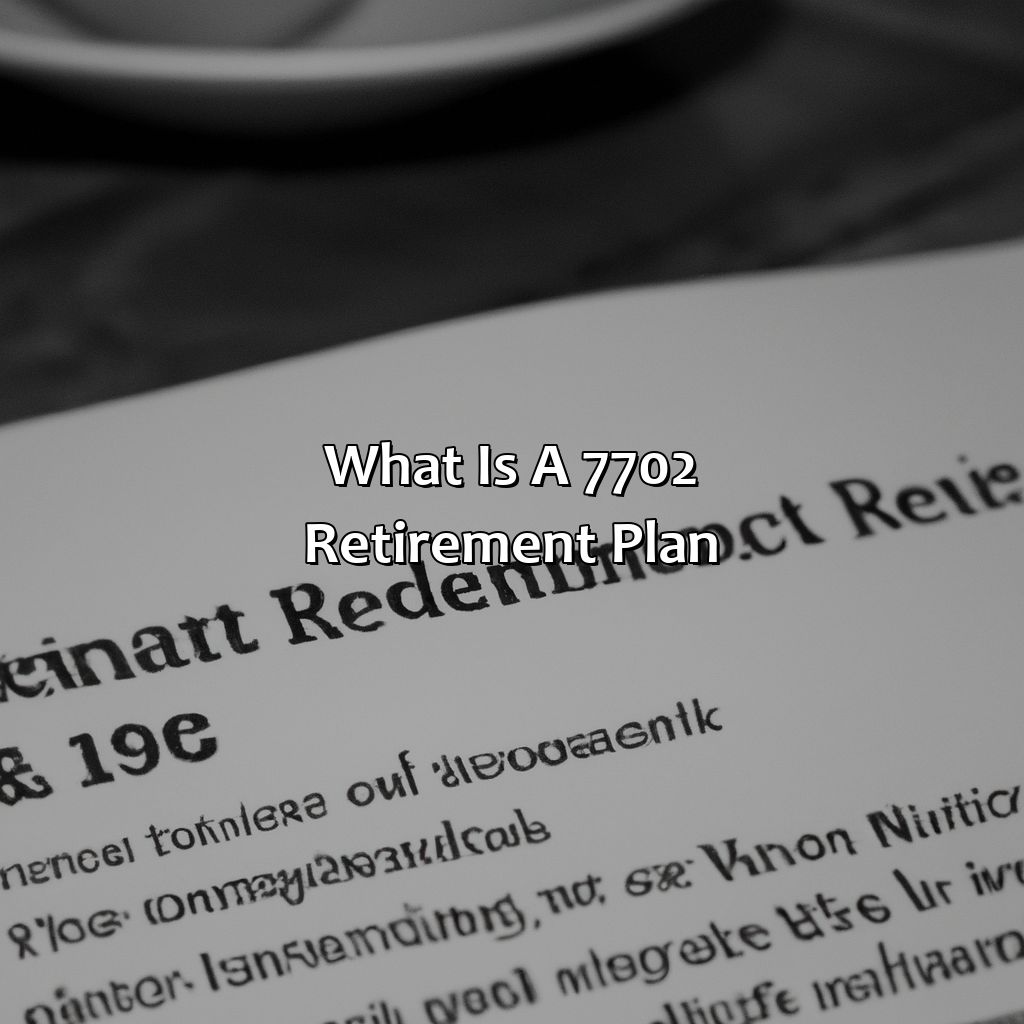What Is A 7702 Retirement Plan?
Key Takeaway:
- A 7702 Retirement Plan is a type of permanent life insurance policy that allows tax-free accumulation and distribution of retirement savings, providing both life insurance and retirement benefits in one plan.
- Features of a 7702 Retirement Plan include guaranteed interest, tax benefits, and a death benefit, making it a safe and reliable option for those looking to save for retirement.
- Eligibility requirements for a 7702 Retirement Plan include age limitations and health requirements, making it important for individuals to consider their health before applying for the plan.
- Funding a 7702 Retirement Plan involves premium payments and contribution limits, with the ability to withdraw funds during retirement and penalties for early withdrawals.
- When compared with other retirement plans such as 401(k) and IRA plans, 7702 Retirement Plans offer unique benefits and features that make them a valuable option for those looking to secure retirement savings.
Are you looking for a retirement plan that can provide tax-deferred growth potential? A 7702 plan may be the answer you need – read on to learn more about this powerful retirement savings option.
Overview of 7702 Retirement Plan
A 7702 Retirement Plan is a type of life insurance policy that offers tax benefits and helps individuals save for retirement. The plan allows for tax-deferred growth and tax-free withdrawals if certain criteria are met. Contributions to the plan are made with after-tax dollars, but the interest earned is not taxable. This type of plan offers flexibility in terms of contributions and withdrawals and can be a valuable addition to a retirement portfolio. It is important to consider all options before investing in a 7702 Retirement Plan and to work with a financial advisor to determine the best approach for individual circumstances.
Pro Tip: When considering a 7702 Retirement Plan, it’s important to understand the fees and charges associated with the plan, including any surrender charges or penalties for early withdrawals. Be sure to read all policy documents carefully before investing.
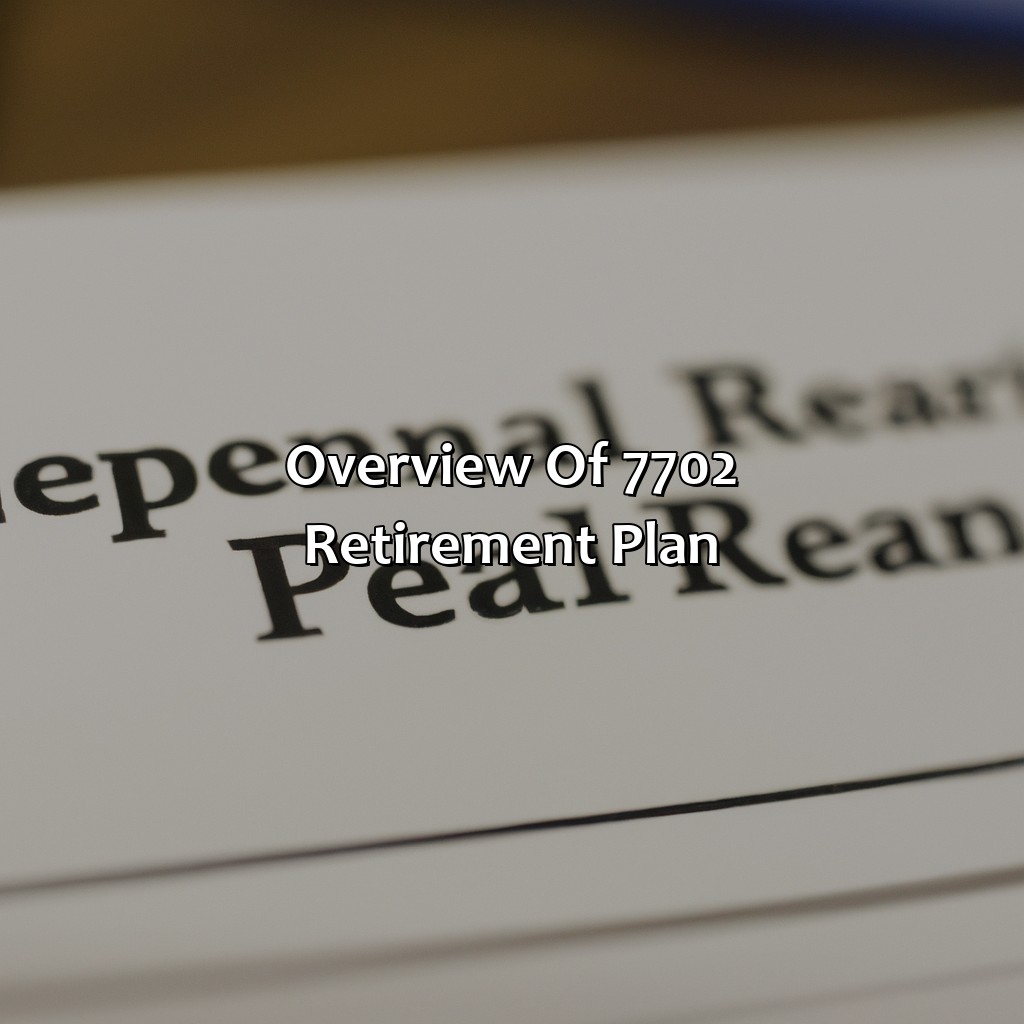
Image credits: retiregenz.com by Harry Woodhock
Features of a 7702 Retirement Plan
You gotta know how it works to comprehend the 7702 retirement plan. Its features, like guaranteed interest, tax benefits, and death benefit, make it a top choice for those hunting for security in retirement. Here’s a breakdown of the 7702 retirement plan’s main aspects.
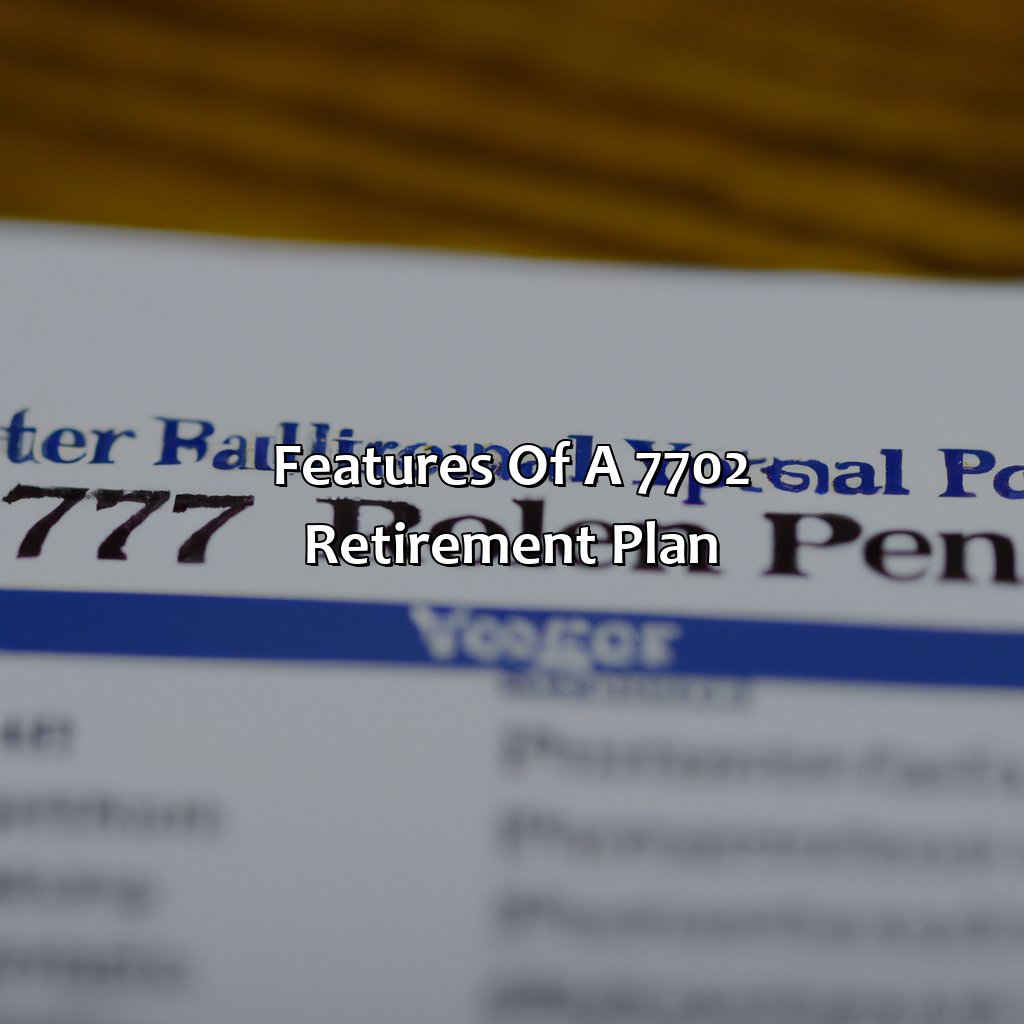
Image credits: retiregenz.com by Adam Jones
Guaranteed Interest
The 7702 retirement plan offers a guaranteed minimum interest rate that remains unchanged for the life of the policy. This rate provides a level of predictability and security when planning for retirement. The guaranteed interest option is particularly attractive to risk-averse investors who prefer low volatility and steady returns.
The amount of guaranteed interest offered by a 7702 retirement plan may vary depending on policy terms, market conditions, and other factors. Typically, insurance companies offer different options to policyholders regarding the percentage of their premiums that will qualify for guaranteed interest.
In addition to the guaranteed interest feature, the 7702 plan also offers tax advantages, flexibility in funding, and death benefits. It is worth noting that while this plan may be suitable for retirees seeking stability in their investments, it may not be ideal for those looking for high returns or significant growth potential.
According to Investopedia.com, “Guaranteed investment contract (GIC) funds are popular investment choices within 7702 plans as they provide principal protection during times of market downturns.”
Who says retirement can’t be fun? With a 7702 plan, you can laugh all the way to the tax savings bank.
Tax Benefits
One of the benefits of a 7702 Retirement Plan is its favorable tax treatment. Contributions made to the plan are made with after-tax dollars, which means that earnings on those contributions grow tax-free. This can result in significant tax savings, as distributions taken from the plan during retirement are taxed at a lower rate than other sources of income.
Additionally, a 7702 plan allows for flexible distribution options. Unlike traditional retirement plans, there are no penalties for early withdrawals or required minimum distributions. As a result, individuals have more control over their retirement income and can make withdrawals based on their specific financial needs.
It’s important to note that while 7702 plans do offer some significant tax benefits, they may not be the best option for everyone. It’s crucial to consider individual financial goals and circumstances before deciding whether or not to invest in this type of plan.
One strategy for maximizing the tax benefits of a 7702 plan is to invest early and consistently. By contributing regularly over time, individuals can build up a larger pool of tax-free earnings and potentially lower their overall tax burden during retirement.
Furthermore, working with a financial advisor who specializes in retirement planning can help individuals navigate the complexities of these types of plans and ensure they take full advantage of all available benefits.
In a 7702 retirement plan, the death benefit is like a consolation prize for not living long enough to enjoy your savings – at least your beneficiaries will be happy.
Death Benefit
In a 7702 retirement plan, there exists a benefit that covers the expenses of an individual’s death. This is known as the Legacy Benefit and it holds immense value for individuals who prioritize legacy planning.
- The amount provided as a Legacy Benefit is tax-free and can be used to cover funeral expenses or transfer of wealth to heirs.
- The sum assured will be paid out upon the death of the policyholder without any delay.
- Policyholders can customize their Legacy Benefit according to their needs and can opt for a higher or lower amount based on their preferences.
- If a policyholder lives past the maturity date of the policy, they can still receive the death benefit if they have designated beneficiaries with contingent rights.
- In some cases, additional riders can be added to enhance this benefit and cater to specific scenarios such as chronic illness or long-term care.
It is also worth noting that some policies may define the Legacy Benefit differently from others. It is essential to consult with an expert in financial planning or insurance before taking any concrete actions regarding one’s retirement plan.
Pro Tip: Ensure you carefully consider your options before selecting the amount for your Legacy Benefit, as it cannot be changed once set.
Who knew being eligible for retirement could be so exciting? Welcome to the exclusive club of the 7702 Retirement Plan!
Eligibility for 7702 Retirement Plan
Are you eligible for a 7702 Retirement Plan? It depends on your age and physical health! Here’s what you need to know. Your age and health status are the defining factors for eligibility! Make sure you meet all the requirements to qualify for this type of plan.
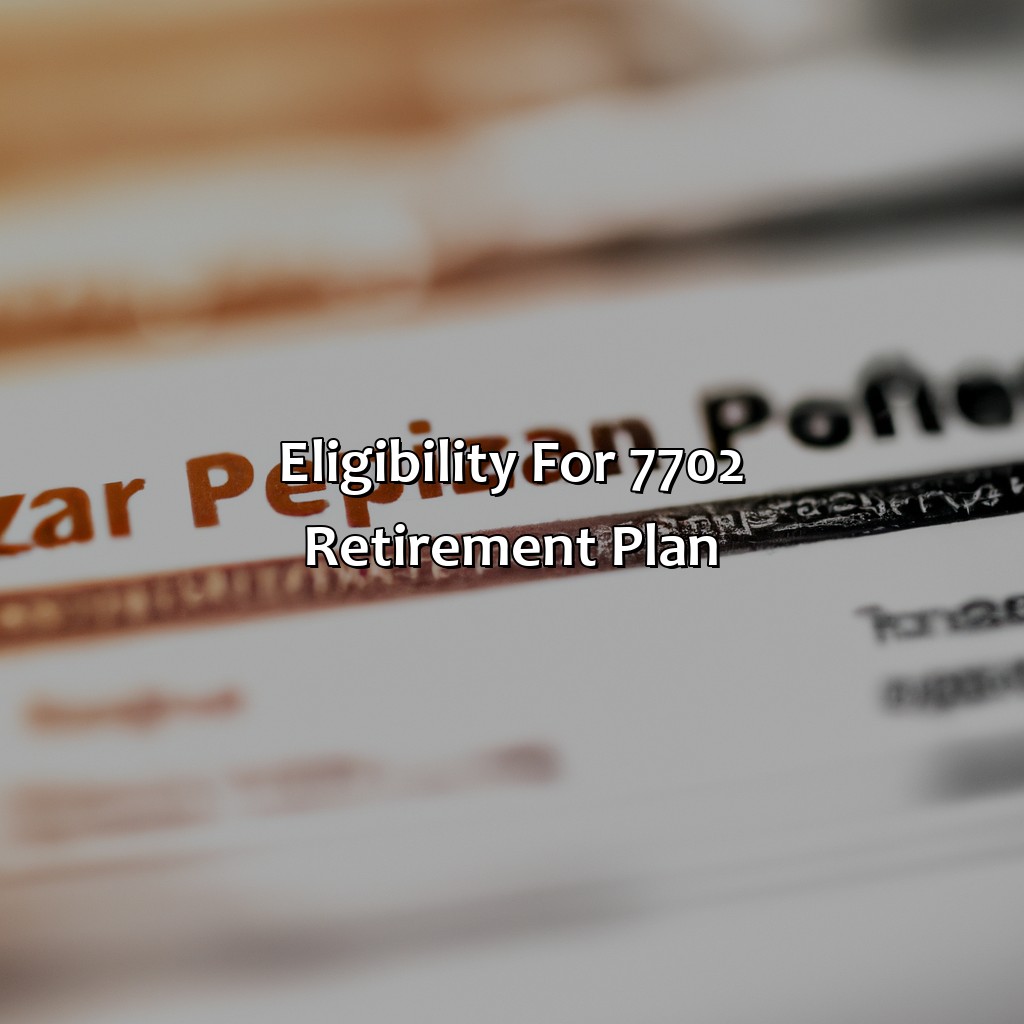
Image credits: retiregenz.com by David Woodhock
Age Limitations
Retiring isn’t about aging – determining eligibility for 7702 retirement plans require knowledge of various factors. The Internal Revenue Code (IRC) doesn’t have an age limitation, but several other criteria exist. Applicants must pass the seven-pay test, which determines whether proposed premiums comply with IRC requirements. Some insurers may also require a medical exam.
Additionally, to qualify for tax benefits, every accumulated withdrawal should follow or satisfy the code’s definition of life insurance at all times while the policy remains in effect.
According to research by Insured Retirement Institute in 2019, over half of Americans are not actively planning for retirement and do not know how much money their retirement needs will cost.
Hope you’ve been taking your vitamins, because this section is about the health requirements for the 7702 retirement plan.
Health Requirements
Meeting the criteria for the 7702 Retirement Plan involves fulfilling certain health standards. To qualify, individuals must pass various medical examinations to demonstrate they are in good health and have a low risk of future illness. Some exams may include testing for blood pressure, cholesterol levels, BMI, and overall wellness. These requirements ensure that the plan is financially feasible and sustainable in the long run.
Furthermore, meeting these health requirements also provides additional benefits to the policyholder. For example, it allows for a lower premium rate compared to individuals who do not meet these standards. The insurer reduces their risk by offering coverage only to those who are expected to live longer lives with fewer health concerns.
It’s important to note that standards vary within each insurance company, however some commonly utilized guidelines include meeting a certain weight range or passing an EKG test.
In history, prior to the implementation of these health standards, insurance companies faced potential financial ruin due to guaranteed payout amounts on policies. The introduction of health testing helped create more stable financial plans with greater accuracy in predicting future costs and payouts based on individuals’ specific circumstances.
Say goodbye to splurging on avocado toast, it’s time to start funding that 7702 retirement plan.
Funding a 7702 Retirement Plan
Funding a 7702 retirement plan? Premium payments are key! Know the limits. Here’s a brief guide. Secure your retirement with this tax-advantaged option. Plan ahead!
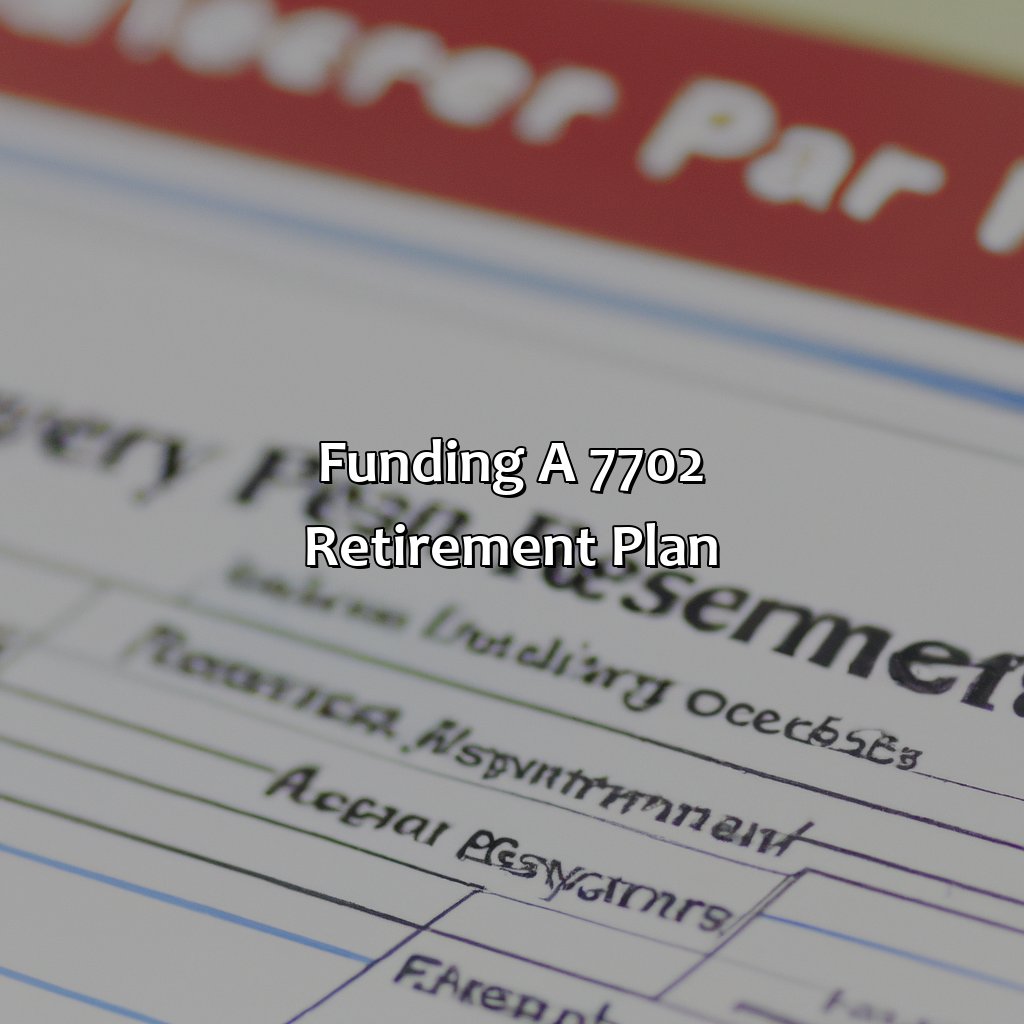
Image credits: retiregenz.com by Joel Washington
Premium Payments
Premium payments refer to the amount of money required to fund a 7702 retirement plan. These payments are made to ensure that the policy is properly funded and will provide the desired benefit at retirement. The premium payment amount varies based on factors such as age, health, and desired benefits. It is important to regularly review and adjust premium payments to ensure retirement goals are met.
In addition to regular premium payments, there may be other costs associated with a 7702 retirement plan, such as fees for administration or investment management. These additional costs should be taken into consideration when determining the overall cost of the plan.
It is important to note that premium payments are only part of the funding equation for a 7702 retirement plan. Other factors such as investment performance and life expectancy also play a role in determining whether the plan is properly funded.
Interestingly, 7702 refers to the section of the Internal Revenue Code that governs life insurance contracts as an investment vehicle for tax-deferred growth. By using this particular type of contract structure, individuals can accumulate savings for retirement on a tax-advantaged basis while also receiving insurance protection during their working years.
Saving for retirement is like trying to fit a square peg into a round hole, except the peg is your money and the hole keeps getting smaller – welcome to contribution limits!
Contribution Limits
The amount of money that can be contributed to a 7702 Retirement Plan is subject to specific limits. These are guidelines which govern how much an individual is allowed to contribute annually, and must be followed closely.
- The contribution limit for a 7702 Retirement Plan varies based on the age of the individual.
- Contributions typically increase as an individual gets older, with higher limits for those who are closer to retirement age.
- In general, the contribution limits for a participant in a 7702 Retirement Plan are higher than those for traditional retirement accounts.
- However, there may be additional restrictions or limitations depending on the plan provider or circumstances of the participant.
- To stay within these limits, it is important to consult with a financial advisor or plan administrator before contributing any funds.
- Violating contribution limits can result in penalties and tax implications.
It is essential to note that contribution limits for a 7702 Retirement Plan are not set in stone and can change at any given time. It’s therefore always recommended that individuals keep up-to-date with news about their plans so that they do not run into problems.
In history, Contribution Limits have been modified multiple times to adhere better to current economic conditions. But now the rules have been refined enough so you should be able to make what you need clear during your planning process.
Turning your 7702 retirement plan into a 401(k) might be like converting your classic car into a segway – sure, it’s still transportation, but you’ll miss the ride.
Withdrawal and Tax Considerations
Manage your 7702 retirement plan withdrawals and taxes with ease! Get to know the distributions of retirement and the fees for early withdrawals. This’ll give you an answer to understand the tax results of your retirement funds and the penalties for early withdrawals.
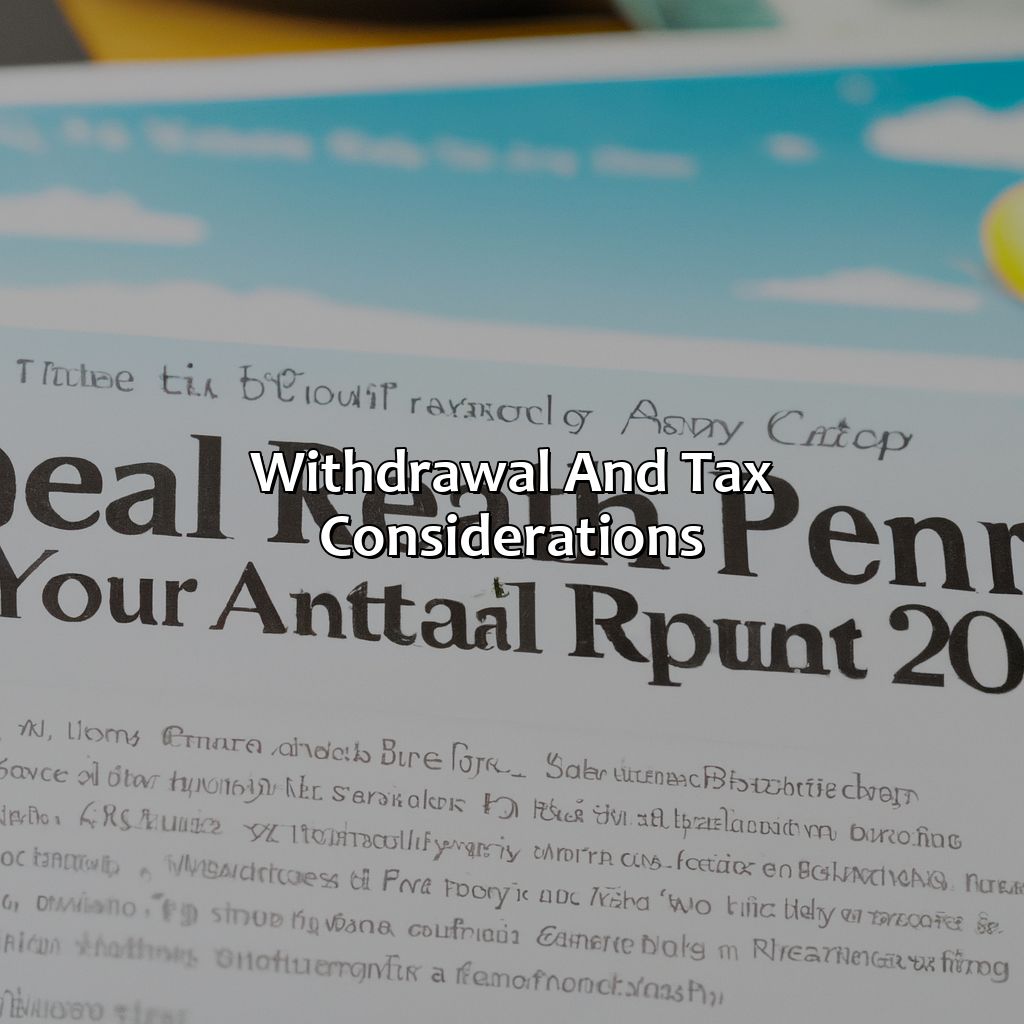
Image credits: retiregenz.com by David Arnold
Distributions in Retirement
In retirement, the manner in which withdrawals are made is a crucial step to secure financially. It’s important to understand the various options available and decide on the one that is most suitable for your needs and lifestyle.
One such option is to choose a systematic withdrawal plan where you receive funds from your retirement account a fixed number of times per year or month. Another option could be to withdraw all money at once, but it may come with tax implications.
It’s essential to plan for taxes in advance when taking distributions in retirement. A 7702 retirement plan may provide tax advantages depending on the policy used. With this type of plan, you can grow your savings without being taxed until you withdraw it after five years of ownership.
However, there are restrictions on how much you can contribute each year, so it’s important to consult an expert before making any decisions about using this plan.
According to Investopedia, “This gives holders access to typically low volatility markets with above-average returns” (2021). As such, people should do their due diligence before choosing a distribution method in retirement.
Breaking up with your retirement savings early is like ending a long-term relationship via text – you’ll be hit with some hefty penalties.
Penalties for Early Withdrawals
Early Withdrawals from Retirement Accounts
If you withdraw funds from your retirement accounts before the age of 59 ½, you may incur significant penalties. These include a withdrawal penalty of 10% on top of regular income tax rates. The Internal Revenue Service allows certain exemptions for early withdrawals such as deductions for medical expenses, first-time homebuyer purchases, and education expenses.
It’s important to know that even if you have reached the age of 59 ½, some retirement plans may allow earlier penalty-free withdrawals while others don’t. It’s vital to check with your plan administrator to learn what options are available to you.
Don’t Miss Out on Your Retirement Savings
In summary, it’s crucial to understand the potential penalties for early withdrawals from your retirement accounts. Being aware of these penalties can help you avoid costly mistakes and safeguard your financial future. By adhering to the rules and consulting a financial advisor when necessary, you can ensure your retirement savings are used effectively and efficiently.
Why settle for a mediocre retirement plan when you can have a 7702? It’s like upgrading from a bicycle to a Lamborghini.
Comparison with Other Types of Retirement Plans
To compare 7702 retirement plans to other options, like 401(k) and IRA plans, we look at the benefits. A 401(k) is a usual employer-sponsored plan. Whereas, an IRA plan is privately funded. They both have a great impact on retirement planning. You must pick the correct one depending on your income level and individual objectives.
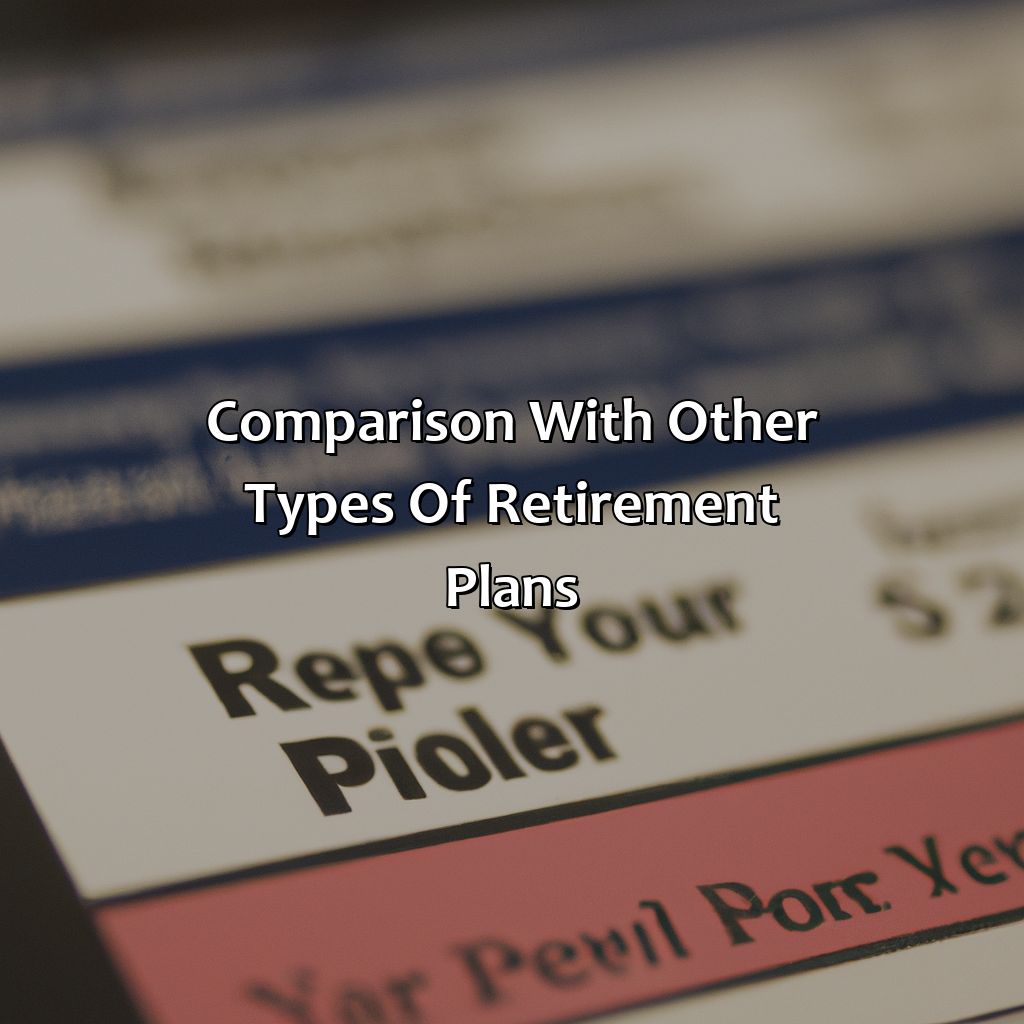
Image credits: retiregenz.com by Joel Arnold
401(k) plans
Retirement plans that allow employees to save a portion of their income on a pre-tax basis are known as tax-deferred plans. These employee-sponsored savings plans are commonly referred to as 401(k) plans. They allow employees to contribute money towards their retirement savings, typically through automatic payroll deductions, and many employers offer matching funds as an incentive to participate.
A 401(k) plan allows employees to defer taxes on the money they contribute until they withdraw funds in retirement. This means that the contributions and earnings grow tax-free until withdrawal, which can result in significant savings over time. There are limits on how much can be contributed each year, and withdrawals made before age 59½ may be subject to penalties.
It’s important for employees to familiarize themselves with the terms and conditions of their employer’s 401(k) plan, including any fees associated with it, asset allocation options, and investment choices. This will enable them to make informed decisions about their investments and maximize their chances of building a comfortable retirement nest egg.
Don’t miss out on the benefits offered by your employer’s 401(k) plan – start saving for your future today. By contributing regularly over time, you can build a solid retirement fund that will provide security and peace of mind in your golden years.
IRAs are like the middle child of retirement plans – not as flashy as the 401(k) or as mysterious as the 7702, but still worthy of attention.
IRA plans
Individual Retirement Arrangements (IRAs) are a popular type of retirement plan that offer tax advantages to individuals saving for retirement. They allow investors to invest in various asset classes, such as stocks, bonds, and mutual funds.
Compared to other types of retirement plans, IRAs have lower contribution limits and stricter distribution rules. Traditional IRAs give tax advantages at the time of contributions while taxes are incurred on withdrawals. Roth IRAs do not yield any immediate tax benefits but provide tax-free withdrawals in retirement.
It’s important to note that there are different types of IRAs available, including Simplified Employee Pension (SEP) and Savings Incentive Match Plan for Employees (SIMPLE) IRA. These plans vary in terms of maximum contributions, eligibility criteria, and employer involvement.
Pro Tip: Consider consulting a financial advisor to help determine which type of IRA may be best suited for your individual financial goals and situation.
Five Facts About 7702 Retirement Plans:
- ✅ A 7702 retirement plan is a life insurance contract that meets specific IRS criteria to be considered a life insurance policy for tax purposes. (Source: Investopedia)
- ✅ These plans are also known as “tax-advantaged life insurance” or “tax-free retirement plans.” (Source: The Balance)
- ✅ Contributions to 7702 plans are made with after-tax dollars, but the cash value grows tax-free. (Source: PolicyZip)
- ✅ A main advantage of a 7702 plan is that withdrawals are considered a tax-free return of principal instead of taxable income. (Source: Forbes)
- ✅ 7702 plans can be used in retirement planning to provide tax-free income in addition to traditional retirement accounts. (Source: Investopedia)
FAQs about What Is A 7702 Retirement Plan?
What is a 7702 retirement plan?
A 7702 retirement plan is a life insurance policy that is specially designed to meet the requirements of section 7702 of the Internal Revenue Code. These plans offer tax-deferred growth and tax-free withdrawals that can be used for retirement income.
How does a 7702 retirement plan work?
A 7702 retirement plan works by offering a life insurance policy that has certain tax benefits. The policy will have cash value that grows tax-deferred and can be used as a source of tax-free income during retirement. This can be a good option for people who want to supplement their retirement savings with tax-free income.
What are the advantages of a 7702 retirement plan?
The advantages of a 7702 retirement plan include tax-deferred growth and tax-free withdrawals, as well as the ability to use the policy as collateral for a loan. Additionally, these plans offer a death benefit that can be used to provide for loved ones after the policyholder’s death.
Who is eligible for a 7702 retirement plan?
Anyone who wants to take advantage of the tax benefits of a 7702 retirement plan can apply for a policy. However, these plans may be more suitable for people who are already maxing out their 401(k) contributions or who are self-employed and looking for additional retirement savings options.
What are the limitations of a 7702 retirement plan?
The main limitation of a 7702 retirement plan is that it is a life insurance policy, which means that premiums must be paid. Additionally, there may be restrictions on the amount of money that can be contributed to the policy or the types of investments that can be made with the cash value.
How can I set up a 7702 retirement plan?
To set up a 7702 retirement plan, you will need to work with a financial advisor or insurance agent who specializes in these types of policies. They can help you choose a policy that meets your needs and can provide guidance on how to fund and manage the policy over time.
